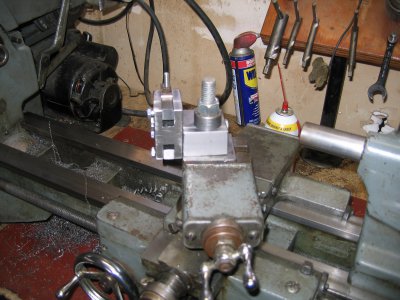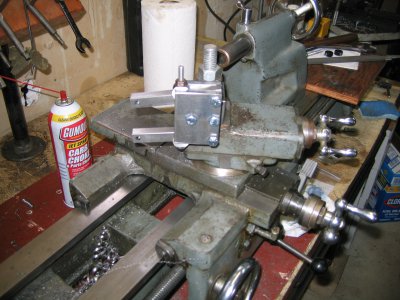- Joined
- Oct 4, 2016
- Messages
- 7,022
I have not tried the behind centerline approach, I was kinda thinking you would move away from the knob, and get a hex. If you go too tight with the knurl on aluminum it will tear the diamond out by the root.....
I had some leftover nickel acetate so I decided to nickel plate all the components for the knurler and modify the tensioning knob with hex or knurled options to tighten. This was a fun project and works so much better than the bump knurler that came with the tool post.
Mikey,
First of all, I've got to confess that I didn't read all eight pages of posts that your original one generated on this subject. I've been thinking of building a knurling tool of this type for a few years. I've looked at the one Sherline offers and I've collected a few articles from the internet that deal with this type tool. Yours makes the most sense to me when you talk about rigidity and mounting it directly to the cross slide.
I do have one question, and it looks like you have the experience to provide a good answer. Not looking to start an argument here. Just curious to see what your have learned about this machining technique. What is the best way to generate a quality knurl? Do you position the wheels where knurl is started, then tighten them against the stock until the finish you want is showing, or do you touch off, move away from the part, adjust for depth, then feed in from the end?
You mentioned that you had asked the vendor to bevel the edges of your knurls and I'm trying to figure out why. Did you need them beveled for lead-in so they could be fed onto the stock from the end, or did you want them that way for a certain look at the edges of the finished knurl?
I repeat, I didn't read all the postings here, and maybe that information is included. Apologies if I'm asking you to repeat yourself.
Russ


